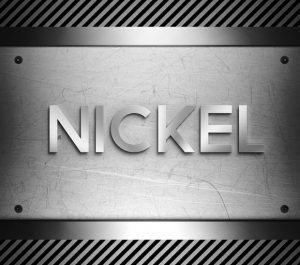Nickel in deficit as LME inventories continue to decline
Inventory drawdown is the defining narrative at the moment, and nickel is part of the story.
Economic recovery around the world is patchy. Some countries are recovering strongly, while some are still struggling. Inflation is surging and analysts are having trouble agreeing whether 2022 can see anything like 2021’s rate of growth as a result.
All the metals intelligence you need, including nickel and stainless steel, in one user-friendly platform with unlimited usage. Request a MetalMiner Insights platform demo.
But one area of near universal concern is dwindling exchange and trade inventory stock levels.
Nickel stockpiles fall
Take nickel, for example. Nickel stockpiles on the London Metal Exchange recently fell for the 51st straight day, a Financial Times post reports. Meanwhile, in China, nickel stocks in official warehouses are close to a record low at just 4,859 metric tons. Aluminum inventories are a fraction of levels held two years ago. U.S. crude inventories fell to their lowest levels since October 2018.
While the oil market is broadly in balance, both nickel and aluminum are in deficit.
According to the Financial Times, nickel registered a supply-demand deficit of around 180,000 tons last year. That is equal to approximately 6% of its total market size. Not surprisingly, nickel prices have been driven higher both by industrial metals demand and investor speculation.
Nickel demand in EVs
Stainless demand remains strong but investors are more excited by the long-awaited ramp-up in electric vehicle demand.
In the U.K., one in four new cars last year was electric. That is a growth curve that holds the prospect for a substantial increase in demand from a sector that had long held promise but traditionally failed to deliver.
According to the International Energy Agency, demand for nickel will need to grow 19-fold by 2040 if the world wants to hit the targets of the Paris agreement on climate change.
Now, we all know that’s unlikely to happen – either hitting the targets or the 19-fold increase in nickel demand. Alternative technologies will come along in the meantime.
However, even if half that demand transpires, it will have a profound impact on nickel supply. That is what is getting investors excited.
While new projects have been in the news, we wrote just last week about a significant new mine in Tanzania that BHP was investing money and expertise to help bring to production, demand is still outstripping supply.
Indonesia has traditionally been China’s largest supplier. A sustained effort by the authorities to force investment into domestic refining and downstream products is seeing mine supply consumed domestically in a growing stainless-steel industry, mostly Chinese-funded but conveniently “not Chinese” when it comes to U.S. and E.U. imports.
The combination of strong stainless demand, rising EV demand and growing but still constrained nickel supply looks set to continue. Whether that results in the nickel price continuing to rise remains to be seen.
However, little short of a highly unlikely recession looks likely to fundamentally undermine support for the metal this year.
Cut-to-length adders. Width and gauge adders. Coatings. Feel confident in knowing what you should be paying for metal with MetalMiner should-cost models.



Leave a Reply